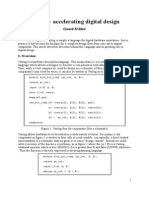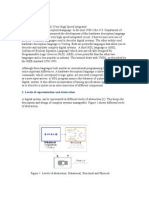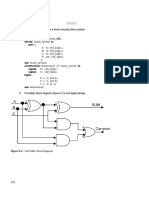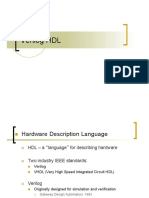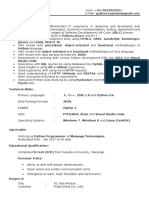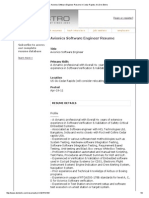100% found this document useful (1 vote)
392 views2 pagesDifference Between VHDL & Verilog
Verilog and VHDL are hardware description languages used for electronic chips. Verilog is based on C and is weakly typed and case sensitive, while VHDL is based on Pascal and Ada and is strongly typed and case insensitive. VHDL supports more complex data types and library management, making it more suitable for large projects, while Verilog is easier to learn but has limitations in data types and library usage.
Uploaded by
Sagar ShahCopyright
© Attribution Non-Commercial (BY-NC)
We take content rights seriously. If you suspect this is your content, claim it here.
Available Formats
Download as DOCX, PDF, TXT or read online on Scribd
100% found this document useful (1 vote)
392 views2 pagesDifference Between VHDL & Verilog
Verilog and VHDL are hardware description languages used for electronic chips. Verilog is based on C and is weakly typed and case sensitive, while VHDL is based on Pascal and Ada and is strongly typed and case insensitive. VHDL supports more complex data types and library management, making it more suitable for large projects, while Verilog is easier to learn but has limitations in data types and library usage.
Uploaded by
Sagar ShahCopyright
© Attribution Non-Commercial (BY-NC)
We take content rights seriously. If you suspect this is your content, claim it here.
Available Formats
Download as DOCX, PDF, TXT or read online on Scribd
/ 2






































